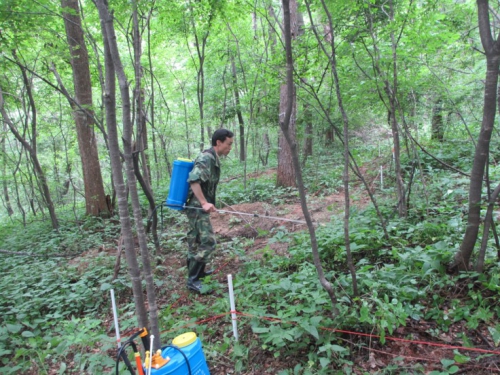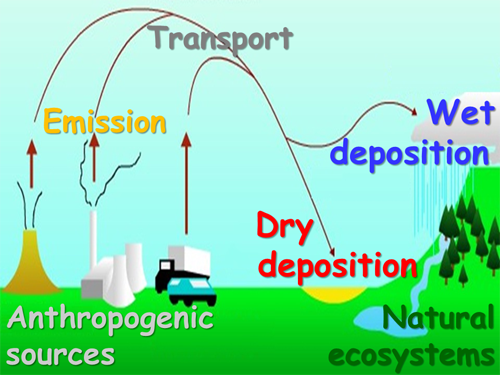Nitrogen is essential for all living things. Synthetic fertilizer, which contains rich reactive nitrogen, has sustained food production and thereby the global population, but the nitrogen it emits is also a burden to the environment—air pollution, soil acidification, water eutrophication, to name just some of the consequences.
Although numerous field studies have been conducted to understand the implications of atmospheric nitrogen deposition in the environment, conventional manipulative experiments have mostly been employed, by adding nitrogen solution directly onto grassland or forest floors (soil).
In an article recently published in Atmospheric and Oceanic Science Letters, Dr PAN Yuepeng, from the Institute of Atmospheric Physics, Chinese Academy of Sciences, and his coauthors, challenge the traditional approach in evaluating the impacts of nitrogen deposition.
"There are three ways for nitrogen to be deposited: rainfall, aerosol and gas; and spraying nitrogen solution onto soil assumes that atmospheric deposition occurs mainly as rainfall (wet deposition)," says Dr PAN. “However, dry deposition of gaseous and particulate reactive nitrogen species, especially ammonia, is also an important deposition process.”

Spraying nitrogen solution onto a forest floor is a commonly used method, mimicking nitrogen deposition, but scientists are now concerned if they can represent the “real” results (Image by XI Dan).
Dr PAN also points out that there have only been a limited number of field studies that have investigated the bidirectional exchange of ammonia between the atmosphere and plants, not to mention the impacts of ammonia on natural ecosystems.

Manipulative field experiments mimicking nitrogen deposition: (a) conventional understory liquid nitrogen addition (mimicking wet deposition); (b) plant canopy liquid nitrogen addition (mimicking wet deposition); and (c) future scenarios for plant canopy dry and wet deposition (mimicking nitrogen deposition pathways, i.e., wet and dry, and species, i.e., oxidized and reduced forms, especially ammonia) (Image by PAN Yuepeng).
"Ammonia plays a vital role in nitrogen deposition and haze pollution. To make things worse, atmospheric ammonia concentrations have increased worldwide in recent decades," suggests Dr Pan. "The next generation of field experiments simulating nitrogen deposition should further consider ammonia."

Nitrogen deposition via rain, gas and aerosol (Image by PAN Yuepeng).

Excess nitrogen addition greens this grassland plot, but can also cause biodiversity loss (Image by LU Xiaotao).
Reference
Yuepeng Pan, Shili Tian, Dianming Wu, Wen Xu, Xiaying Zhu, Chunyan Liu, Dejun Li, Yunting Fang, Lei Duan, Xuejun Liu & Yuesi Wang (2020), Ammonia should be considered in field experiments mimicking nitrogen deposition, Atmospheric and Oceanic Science Letters, 13(3), https://doi.org/10.1080/16742834.2020.1733919 .
Media contact: Ms. LIN Zheng, jennylin@mail.iap.ac.cn
